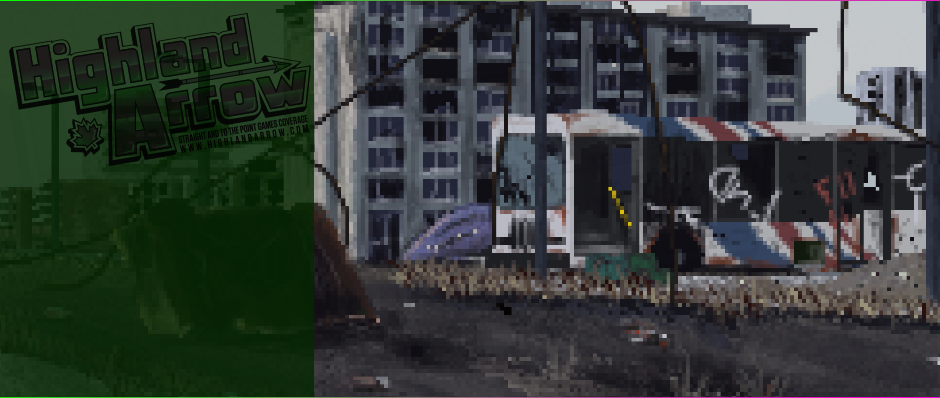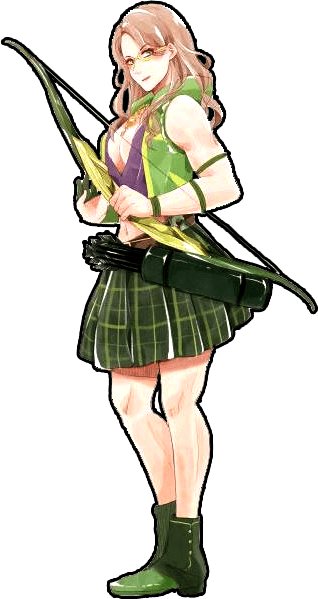

NEO Scavenger
Platforms: PC
Reviewed on: PC
Reviewer: Maiyannah Bishop
Review Play-Time: 107h
Developer: Blue Bottle Games
Publisher: Blue Bottle Games
Released: 2014-12-15
Review Published: 2022-03-11
+ Well-thought-out game interactions
+ Intriguing writing
+ Pixel art works well
- Clunky at best UI
- Combat feedback poor
- Rather shallow gameplay

NEO Scavenger is an isometric survival game developed and published by Blue Bottle Games. I have to confess: this wasn't the game I planned to review next, but given Final Fantasy XIV: Endwalker is a MMO, and yours truly was without internet for a week and a half due to her previous ISP what can only be charitably described as on the same degree of undesirable as black mold in a shower, I was left passing the time with this particular game, and so I thought one might as well give it a formal write-up. I don't know who really wants an in-depth look at a game released almost a decade ago, but it was nonetheless an enjoyable enough time-sink for me and while I couldn't strongly recommend it, you could definitely do worse. Just here to find out if this game is worth buying? Well yeah, on a sale or promotion, it's not worth full price, but if you get a deal on it, I'd say go for it. It's a shallow but fun little time-waster. Want to learn more? Well, let's get on with the review then!
It came from cyro-sleep pod number 05...
NEO Scavenger starts as it means to go on: with you being dropped in media res out of a cryo pod and into the not-quite-loving embrace of a “dogman” werewolf creature who thinks you could make a good lunch. Unlike a Dark Souls boss though, this is an entirely survivable encounter, indeed one you're meant to survive, unless you were dumb, and any manner of different skills you chose in the character creation will provides some means of either vanquishing this first foe, or more likely escaping it. This introduces us to a certain choice-based UI, where you are given situations which you can resolve using a variety of skills and attributes you possess, items in your inventory, or sometimes, things in the environment. This first encounter presents the game's bread and butter simple choices to the player in all their glory: both the fairly-good writing which rewards lateral thinking with entertaining events, and the likewise equally fairly-clunky user interface. Depending on what skill you use, you might dive through the window to escape, hack the door shut to keep it out of the room you're in, intimidate it away, or just 'prepare to beat its ass' - which you can actually manage (don't try that on subsequent dogman encounters in the wild unless you're very brave or very confident, though.) This serves as a highlight of how the game will provide you with many different ways to overcome most situations - with a few somewhat annoying exceptions I'll get to - and the flexibility this writing provides.
That's the start of the game, but not where you begin of course: character creation is both less complex and moreso than many would expect. Where many survival sandbox-type games would allow you to customise your player avatar, NEO Scavenger allows no such customisation, instead having a pre-defined protagonist character you play and can learn the history of as the game develops. The actual customisation as in deciding what abilities and drawbacks the player starts with, from a selection including being Strong, being good with Melee, Trapping, Botany, and so forth. Most of these skills are pretty self-explanatory, and they're all pretty useful. Perhaps the one that isn't immediately evident is Trapping - this also includes outdoor survival tasks as well, such as - importantly - starting fires. Absent it, you can start a fire if you have a lighter, but that's about it, whereas with the Trapping skill you can use focussed sunlight, friction from nearby branches, and other such things. The other skills are largely self-explanatory in their branching choices they present. The intricacy of several choices presented by each skill allows a variety of character 'builds' to be successful in play. I have yet to come across any build (short of intentionally taking no skills at all) that doesn't feel viable if you know what you are doing; of course, certain builds are going to be easier for certain playstyles than others - for my part, I simply went melee, strong, and trapping and bludgeoned the beasts of the wilds to submission to ensure my survival, but less impatient gamers are going to find they can sneak about too, hide tracks, hack computers, and so forth. At least in the skills - we'll touch on other stuff below - there's some tangible breadth to the gameplay on offer here.
“Stock or spectator?”
Where the game falls apart is in this respect has less to do with the design, and more to do with the execution: especially as regards the user interface. Lets not mince words here: NEO Scavenger is an old game, but not that old, and while it is designed in the venerable and now obsolete Flash, Flash alone doesn't excuse the awkward and kind of clunky manufacture. Let's back up though: surely you're wondering, well, what's so clunky about it now, then? It has to do with how the back-end of the game is designed, which then translates to the user interface as well: everything in the game is an item. Be it an actual item, a place on the map you can interact with, or the abilities the protagonist possesses - it is all an item. This exacerbates problem that on its own would be trivial, and not worth mentioning: to use anything means clicking and dragging it from the available selections in one of several different screens. On its own it such a drag & drop UI would be a bit ponderous and slow, but would not be egregious; however in combination with a system which means you have to do that for every single thing without exception, you are left with a UI that while not terrible, feels like it needed some smoothing out to make it function and flow more smoothly.
The combat also stumbles through an inelegeant design. In this specific context, however, it isn't the UI, but rather the mechanics of the combat itself. Indeed, the user interface is functional enough: you are given a display with your status, the enemy's status, their distance, the last action either of you took, and buttons for you to choose what actions to take. Now don't get me wrong, it's not going to win any awards for flashy or effective UI design, but it's perfectly functional here. Rather, the problem I can see someone having here is that the combat is very slow and the feedback is minimal. If you had to feed a dog with food equal to the amount of feedback you get about things in combat from NEO Scavenger, well, the SPCA would be taking that dog away from you, let's say that much. I've certainly had worse, however, the problem with having a combat system like this where the feedback is entirely text, and the pacing is very slow, you're going to have people endlessly clicking away to get through the encounter without it taking all day and missing things. In MUD gaming we often call this “getting scanned out” - you're scanning the text for only the essentials to begin with, and because it is such a crawl of very-similar messages it all starts blending together, and you miss out on things. Of course, this can be somewhat resolved by, you know, slowing down as you go through the text, but given you're going to be reading the same 10 or so lines again and again without any considerable variation, well, I for one can forgive one for wanting to plow through. The pace is slow, ponderous, and not in any calculated way which adds to the experience.
“The Glow”
A lot of what saves the game is how the game environments are described, and indeed, the principal component of a good sandbox game is having a sandbox that is enjoyable. The world drenches itself in intrigue amidst the post-apocalyptic bones of a cyberpunk world where an indeterminate something went wrong, and you're mostly left to your own devices to figure that out. Through florid prose and the occasional splash of pixel art, the dsecriptions do an excellent job of building that intrigue, and of making the player ask questions about the game world, its inhabitants, and what lead it to the state its currently in. The writing here isn't front-and-centre, and I will grant that it does stand out a bit more because of the very tepid and utilitarian writing in the other aspects of the experience such as the combat messages, but there is a flair to the prose in how the world is described that makes it captivating. Accompanying many of those descriptions are some truly-gorgeous pixel art pieces, and while they were sparse to come across, they were always welcome when I did find a new one, and it served as at least an early motivation to see more in the game to see more of them. I realize that pixel art is very much a “take it or leave it” thing for many people, but they're quite well-done pieces in my subjective opinion, anyways, and they add to the game.
But May, I can hear readers whom have gotten this far saying already: that's the side stuff, ultimately - what about the scavenging? Well, that's the rub: it is an moderately-engaging portion of the game that manages to scratch the “just one more go” gambling-urge to test the RNG again and again, just to see if you get lucky the next time. The games' skill and item combinations are in aid of that goal quite well, but while I can certainly see some people quite enjoying this mechanic, I also see it wearing thin relatively quickly, and that's due to the game's chief flaw other than the interface: after providing the player with an interesting world and arraying a selection of tools before them with which to interact with it, it then proceeds to do very little with said. In my head I think of this as the Bethesda problem: you have a developer which is more talented in crafting a world than narrative, so you have a world which beckons you to discover the many things hidden in its far-flung nooks and crannies, but very little actually happening in that world. There's maybe a couple handfuls of different sites to try to scavenge from, they have a fixed loot table with given drop percentages, and, therefore, it isn't long before you have a feel for what all is on said table, and it in turn rapidly becomes rather repetitive. There's enough here to appeal for a while, but not long.
And so we finally come to the last topic, really: the narrative. I saved it for last because I feel of all of the components to this thing, it encapsulates the overall quality in one nice little microcosm. The narrative we do have comes across as stilted, somewhat slapdash, and it has several good ideas, that ultimately are let down by patch, half-realized execution. In the first draft of this review I wrote, I went on at a little bit of length with some of the problems with the narrative and I quickly realized that, despite just being one lengthy paragraph, in writing that much, I had in essence spoiled a considerable tract of the game story; more than the majority of it in fact. And, indeed, this is the part I struggled with for an inordinate amount of time, because to speak frankly for a moment, even picking a single example to expound upon here is taking a significant chunk of the game narrative. So, lets just leave it at: there's good ideas here, but there's not nearly enough of it, as with a lot of the game. While I'm often myself quoted as saying that “wanting more of something isn't the worst complaint” - and that is true - there does come a point where there's just not enough there to solidly recommend, and well, we have it here.


